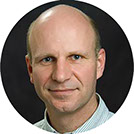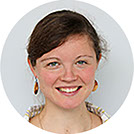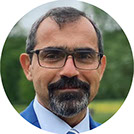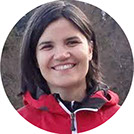BONARES
2023 Conference Berlin
15 – 17 May 2023 | Berlin | Germany
Soil as sustainable resource
Bringing together the wide range of expertise required to direct soil management towards sustainable soil functioning








—
—
—
Plenary | Keynotes
Plenary

Marcel van der Heijden | Plant-Soil Interactions Group, Agroscope, Zurich, Switzerland; Department of Plant and Microbial Biology, University of Zurich, Switzerland
Soil as a sustainable resource: microbiome engineering, pesticides and soil multifunctionality in agro-ecosystems
Soils are of pivotal importance for food production and sustainable ecosystems. Up to one quarter of Earth's biodiversity lives in the soil. Yet, it is still poorly understood how such a diverse and functionally complex soil microbiome influences ecosystem functioning. Moreover, we only partly know how different management practices influence plant yield, soil nutrient cycling and overall system performance (ecosystem multifunctionality). In particular, it is unresolved whether soil microbiome management can help to develop more sustainable agroecosystems.
Here we compare the impact of different land use systems and major cropping systems (e.g. organic, conventional and conservation agriculture) on plant yield, soil functioning and overall ecosystem performance. By analysing the soil microbiome across >700 sites in Europe we demonstrate the impact of land-use on a wide range of functional groups including plant pathogens. We demonstrate that soil management and soil microbiome engineering are suitable tools to promote soil processes. In particular we observed that inoculation with biologicals (e.g. arbuscular mycorrhizal fungi - AMF) is a viable tool for soil microbiome management and to promote crop yield. We inoculated over 50 agricultural fields and observed that AMF enhanced maize yield in half of the fields with significant growth effects (>15%-40%) in 25% of the fields. Inoculation success was best predicted by soil microbiome characteristics, specifically pathogen occurrence, of the fields. Our analysis also demonstrated that over 60% of commercial mycorrhizal products are unreliable and do not contain viable propagules, pointing to the need to further develop these products and include quality criteria for accession of such products to the market.
Moreover, we investigated the impact of pesticides and soil stresses on ecosystem performance. We found pesticides in over 100 soils investigated. In some fields, over 30 different pesticide residues were found. To which extend these pesticide residues influence soil functioning and soil fertility is still poorly understood. First results indicate that the application of fungicides in agricultural fields across Europe reduced AMF richness and the ability of AMF to acquire nutrients for plants. Thus, the application of specific pesticides could hamper soil health, soil biodiversity components and the natural ability of soils to feed plants with nutrients. Overall, our work demonstrates that soil microbiome engineering has a large potential to contribute to sustainable plant production.
Keynotes
Topic 1: Impact of agriculture and cropping systems on soil functions

Rachel Creamer | Wageningen University & Research
Quantifying Soil Health throughout Europe
A joint assessment undertaken by the Soil Health and Food (SH&F) mission board and the Joint Research Centre (JRC) states that 60-70% of soils in Europe are currently considered unhealthy due to e.g. pollution, excess nutrients compaction and soil degradation (A Soil Deal for Europe (European Commission, 2022a)). In light of this worrying figure, the SH&F mission has set the goal to have 75% of European soils healthy or significantly improved by 2030. This is in line with other important European initiatives such as the Green Deal and EU Farm-to-Fork Strategy, as well as with preparations for a new EU law on the protection of Soil Health that aims to protect soils on the same legal basis as air and water. Meanwhile, the private sector too, is proposing explicit visions of sustainable regenerative food systems, such as the 1000 landscapes for 1 billion people (1000 landscapes, 2022), the 100-million farmers platform of the World Economic Forum (World Economic Forum, 2022) and the Regen10 initiative of the World Business Council on Sustainable Development (WBCSD, 2022).
However, capturing the complexity of soil life for soil health assessments is one of the most challenging paradoxes of contemporary soil science. Soil biota perform a plethora of processes that are fundamental to soil health, through the delivery of a range of soil functions. The interaction of soil biota with their surrounding environment, in terms of physico-chemical properties are often impacted by management and climatic conditions, so the question remains how can we capture the local conditions. Designing a monitoring system for Soil Health that provides the much needed local context for land managers, while at the same time facilitating harmonisation at larger spatial scales is the basis of the EU funded BENCHMARKS project. This moves away from the minimum dataset approach of one system fits all and develops a coherent, yet context-specific, monitoring that captures the variation in agricultural systems across Europe.
Topic 2: Carbon and nutrient cycling in soils: Processes and interactions in a changing world

Johannes Lehmann | Cornell University
Circular Bionutrient Economy: biochar-based fertilizer for nutrient recycling
Global food production currently relies on fertilizers that are not sustainably produced. Nitrogen (N) fertilizer is generated using fossil fuels and contributes significantly to the carbon footprint of agriculture. Phosphorus (P) fertilizer is mined from a few regions globally, creating short-term geopolitical challenges against long-term concerns about increased recovery costs and soil contamination with cadmium (Cd). Meanwhile, nutrient excesses pollute cities and water bodies, even in regions where agricultural watersheds are depleted in essential nutrients and low fertilizer applications constrain crop production. An opportunity exists to enhance food security by recovering C, N, and P from a wide range of waste streams, of which sanitation is the least explored, to agriculture. The amount of N and P excreted by human populations exceeds agricultural fertilizer needs in many countries and has the potential to significantly contribute to satisfying domestic fertilizer needs, as more nutrients are in many countries flushed down the toilet than fertilizers added to crops.
Global food production currently relies on fertilizers that are not sustainably produced. Nitrogen (N) fertilizer is generated using fossil fuels and contributes significantly to the carbon footprint of agriculture. Phosphorus (P) fertilizer is mined from a few regions globally, creating short-term geopolitical challenges against long-term concerns about increased recovery costs and soil contamination with cadmium (Cd). Meanwhile, nutrient excesses pollute cities and water bodies, even in regions where agricultural watersheds are depleted in essential nutrients and low fertilizer applications constrain crop production. An opportunity exists to enhance food security by recovering C, N, and P from a wide range of waste streams, of which sanitation is the least explored, to agriculture. The amount of N and P excreted by human populations exceeds agricultural fertilizer needs in many countries and has the potential to significantly contribute to satisfying domestic fertilizer needs, as more nutrients are in many countries flushed down the toilet than fertilizers added to crops.
Novel technologies enable local to global circular bionutrient economies. Scavenging units transform feces into safe fertilizers and recover nutrients from source-separated urine. Building on recent global efforts in technology development, both more established as well as cutting-edge approaches in recovery are being pursued, including microbial immobilization techniques, precipitation and adsorption techniques. Thermochemical methods without the need for external energy in combination with adsorption and precipitation approaches could recover most of the P and more than 50% of the N without risk of soil contamination from organic pollutants including pathogens. Only a separate recovery of N and P allows flexible combinations of fertilizer nutrients to suite crop needs. Nutrient recovery from human excreta also avoids contamination with Cd that is rampant with mined P fertilizers posing constraints to soil health.
Topic 3: Soil biomes and multifunctionality of soils
Naoise Nunan | Sorbonne University, Paris

Energetic and abiotic constraints on soil microbial community activities
The relationship between soil microbial community attributes (diversity, composition) and their activities is still a matter of debate. For example, studies have found that microbial community attributes affect C dynamics when organic C concentrations are high, whilst studies on mineral soils have often concluded that microbial communities exhibit a functional redundancy with respect to C processing. In this presentation I would like to suggest that these contradictory views of the regulatory role of microbial attributes in soil C dynamics can be reconciled if the context in which microbial communities function is accounted for. I will suggest that when organic substrate is readily available to microbial decomposers, as is the case in activity hotspots (e.g. rhizosphere), then the energy content of the available substrate and the microbial capacity to process the substrate regulate process rates. However, when the availability of organic substrate is limited then the intrinsic properties of the microbial decomposers no longer affect process rates and rather it is the properties of the microbial habitat that are related to process rates. Data suggest that microbial access to substrate (i.e. diffusion of substrate to microbial decomposers) is rate limiting.
This leads to the view that soil should be considered as a juxtaposition of microbial biomes in which different regulatory mechanisms operate, with potential consequences for soil functioning.
Topic 4: Soil degradation and sustainable soil management in agricultural landscapes

Peter Fiener | Augsburg University
Landscape scale spatial patterns of soil degradation, soil organic carbon stocks and corresponding biomass production following long-term soil redistribution
Soil erosion on arable land is known to be a major soil threat, causing substantial soil degradation. However, lateral soil fluxes causes both soil loss at erosional sites and soil gains where deposition occurs. After centuries of arable land use, these losses and gains are archived in our today’s patterns in soil properties and especially soil depths. The aim of this keynote lecture is to summarize a series of studies analysing the effects of long-term landscape scale soil redistribution on soil organic carbon stocks as well as agricultural biomass production. A specific focus will be given to tillage erosion processes and corresponding long-term changes of soil patterns since cropping started. Most studies were performed in the Uckermark region (85 km north of Berlin), which is a perfect showcase combining long-term arable use (approx. 1000 a) intensified in the early 1960s, with young and relative shallow soils (approx. 1 to 1.5 m to parent material). The presented studies range from small scale (few hectares) measuring and modelling approaches to landscape scale (hundreds of square kilometres) remote sensing and modelling analyses. Coupled models of soil redistribution, soil organic carbon dynamics and biomass production were utilized for landscape scale assessments. The results clearly indicate that the effects of erosion processes upon soil organic carbon stocks and biomass production need to be analysed, while taking soil losses and gains in an arable landscape into account. Moreover, the results underline that tillage erosion is an often underestimated driver of soil degradation patterns. Thoughts and reflections about future soil conservation, considering the combination of different erosion processes, will close the talk.
Topic 5: Model-based prediction of the dynamics of soil functions

Katharina Meurer | Swedish University of Agricultural Sciences, Uppsala
Modelling the linkages of soil structure dynamics, carbon cycling, hydrological processes and crop production
Extreme weather conditions, such as severe droughts, are expected to become more frequent in a future climate. Water availability controls crop growth, which in turn has a direct and indirect effects on flows of energy, water, carbon, and nutrients in the soil-plant system. Soil-crop models are potentially useful tools to support analyses of the effects of both climate and soil management practices on crop production and the environment. However, the effects of structure dynamics on different soil functions (e.g., hydrology, carbon cycling) at longer time scales are often not considered.
The aim of this keynote lecture is to present a new soil-crop model that accounts for the interactions between soil structure dynamics, carbon cycling, soil physical and hydraulic properties, soil water balance and crop growth. The importance of soil structure dynamics is illustrated by long-term simulations of soil organic matter storage, soil water balance components and crop yields for a field site in central Sweden under climate change and contrasting management practices (organic amendments and crop varieties with an enhanced allocation of carbon to roots).
Topic 6: Using soil sensing technologies for soil mapping, modelling and decision making in agriculture

Abdul M. Mouazen | Ghent University
The Role or Proximal Soil Sensing Technologies and Data Fusion Modelling in Precision Management of Farming Input Resources
Traditionally, soil conditions of agricultural fields are characterised by a limited number of samples being pooled into one "representative" sample, on which a number of soil properties are analysed in the laboratory. A similar single-value approach is followed to characterise other growing conditions and to determine crop characteristics and yield. Increasing the number of samples and analyse them individually to characterise the within-field variability is prohibited by the extra effort, time and costs involved. To overcome the bottleneck of data acquisition by traditional means, soil inventory has evolved into the direction of proximal soil sensing (PSS). This is according to the paradigm "Measure more, less precise". Or in other words, bring the laboratory measurements into the field to increase the spatial coverage, but at the cost of measurement precision. Literature shows PSS to be useful technology for mapping the spatial variability of key soil attributes necessary for decision support of variable rate applications. This talk aims at presenting recent findings about the potential of selected PSS and their fusion for optimising variable rate applications in arable crop production. It concerns the use of multi-sensor data fusion approach to map the spatial variability at the field scale using remote and PSS technologies. Results for variable rate applications of both simulation and field experiments carried out over 10 years in different European and associated countries are reported. Results showed, in the top majority of cases, that variable rate applications increase crop yield, and profitability, while reduce environmental impact by reducing the amount of agrochemicals. It is recommended to promote the adoption of key PSS technologies and fusion modelling in an integrated decision support system as the agronomic, economic and environmental benefits are promising.
Topic 7: Soils as a key to climate change mitigation: private and public governance instruments to unlock the potential

Ana Frelih Larsen | Ecologic Institute, Berlin
Soils and climate change mitigation:
priorities and the required policy mix in the EU
Soils have received increasing visibility in recent years for their role in climate change mitigation. The interest in soil carbon sequestration has grown enormously since the 4 per mil initiative was first announced. So much so that these days soil carbon sequestration, especially via carbon credits, is often promoted like a silver bullet for soils and climate. But how realistic and relevant is the mitigation potential of soils? What is the balance between the importance of maintaining current stocks and additional sequestration potential? Should we be prioritizing mitigation or rather focus on adaptation benefits associated with soils? And what kind of enabling environment and policy measures do we need? This presentation will provide a reflection on these questions. Based on extensive work in the space of agri-food and soil policies in the EU context, it outlines the key priorities and policy mix needed to ensure that the potential of soils for climate mitigation and adaptation is realized.
Topic 8: Data challenges and solutions

Fenny van Egmond | ISRIC World Soil Information, Wageningen
Data challenges and solutions: a closer look at soil data challenges and infrastructures
Soils and soil data are vital to many aspects of life on land and, though a science in itself, interacts with many other domains in research, policy and everyday life such as spatial planning, agriculture, nature conservation, hydrology, food security, climate change mitigation etc. The soil domain, partially due to its age, faces the same challenges as many others, with siloed data, developing standards, privacy concerns, lacking knowledge of and capability to use infrastructures, described use cases etc. The result is that anyone working with multiple soil data sources often needs to spend to up 70 % of the available research time on data preparation, standardisation and harmonisation if they can find and use the data sources at all.
In recent years several voluntary initiatives such as the Global Soil Partnership Pillar 4 and 5, IUSS WG Soil Information Standards, GODAN and several projects such as e.g. EJP SOIL, SIEUSOIL and many more have tried and made progress to address this challenge by developing standards and tools to facilitate easy soil data annotation, discovery, exchange, interoperability and reuse.
This keynote will show recent developments, research and good practice examples of soil data standardisation, exchange and harmonisation for soil scientists. This includes e.g. the establishment of the GloSIS global soil domain model (based on ISO28258 and closely related to INSPIRE, AnzSoilML), international codelists, practical tools and guidance for soil data and metadata provisioning within the Soil Data Workflow, some best practices and developments in Europe towards the EU Soil Observatory, a.o. on soil monitoring data harmonisation, and its related policy context.
